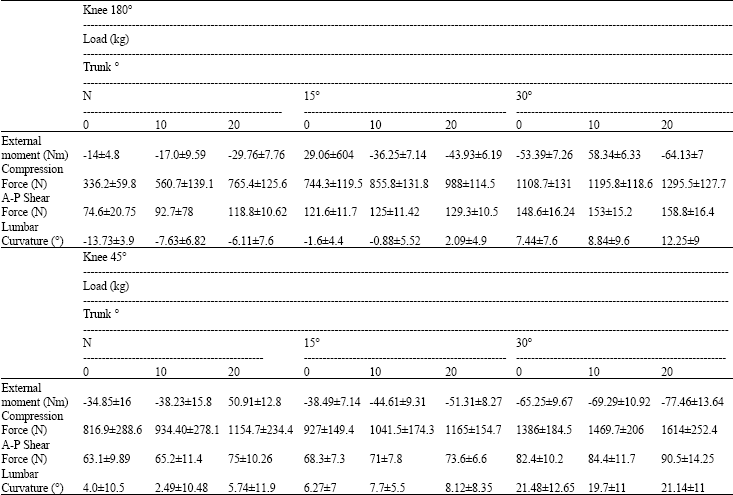Research Article
Evaluation of Spinal Internal Loads and Lumbar Curvature under Holding Static Load at Different Trunk and Knee Positions
Anoshirvan Kasemnejad and 2Elham Karimi
Mohammad Parnianpour
Sharif University of Technology, Tehran, Iran
Seyyed Mohammad Firoozabadi
Tarbiat Modares University, Tehran, Iran
Anoshirvan Kasemnejad
Tarbiat Modares University, Tehran, Iran
Elham Karimi
Sharif University of Technology, Tehran, Iran











